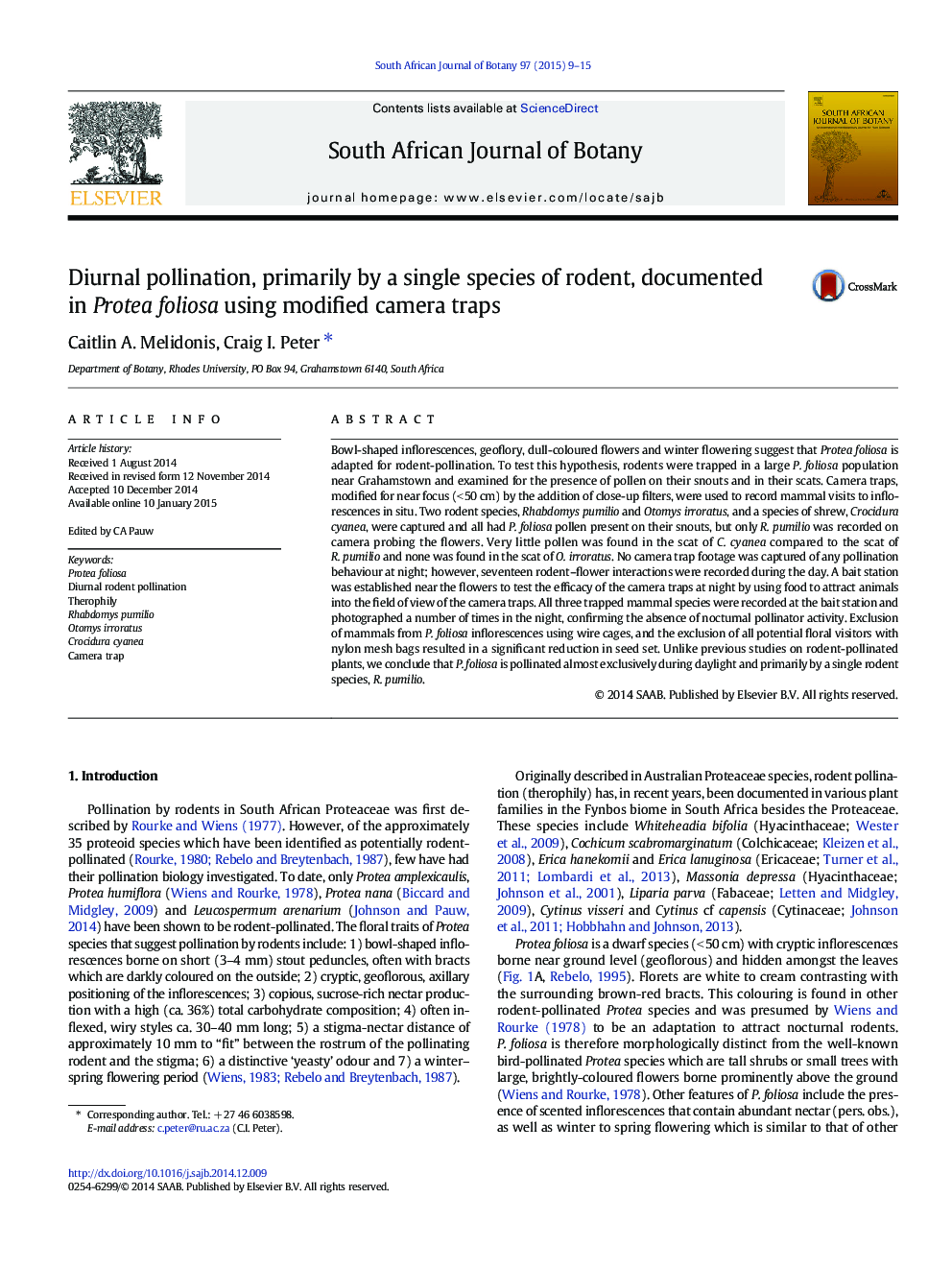| کد مقاله | کد نشریه | سال انتشار | مقاله انگلیسی | نسخه تمام متن |
|---|---|---|---|---|
| 4520556 | 1625161 | 2015 | 7 صفحه PDF | دانلود رایگان |

• Protea foliosa is pollinated primarily by Rhabdomys pumilio during the day.
• Modified motion-sensing camera traps efficiently document in situ rodent–flower interactions.
• Live rodent trapping confirmed the presence of P. folisoa pollen on rodents.
• Mammal exclusion experiments show the importance of pollinators for seed set.
Bowl-shaped inflorescences, geoflory, dull-coloured flowers and winter flowering suggest that Protea foliosa is adapted for rodent-pollination. To test this hypothesis, rodents were trapped in a large P. foliosa population near Grahamstown and examined for the presence of pollen on their snouts and in their scats. Camera traps, modified for near focus (< 50 cm) by the addition of close-up filters, were used to record mammal visits to inflorescences in situ. Two rodent species, Rhabdomys pumilio and Otomys irroratus, and a species of shrew, Crocidura cyanea, were captured and all had P. foliosa pollen present on their snouts, but only R. pumilio was recorded on camera probing the flowers. Very little pollen was found in the scat of C. cyanea compared to the scat of R. pumilio and none was found in the scat of O. irroratus. No camera trap footage was captured of any pollination behaviour at night; however, seventeen rodent–flower interactions were recorded during the day. A bait station was established near the flowers to test the efficacy of the camera traps at night by using food to attract animals into the field of view of the camera traps. All three trapped mammal species were recorded at the bait station and photographed a number of times in the night, confirming the absence of nocturnal pollinator activity. Exclusion of mammals from P. foliosa inflorescences using wire cages, and the exclusion of all potential floral visitors with nylon mesh bags resulted in a significant reduction in seed set. Unlike previous studies on rodent-pollinated plants, we conclude that P. foliosa is pollinated almost exclusively during daylight and primarily by a single rodent species, R. pumilio.
Journal: South African Journal of Botany - Volume 97, March 2015, Pages 9–15